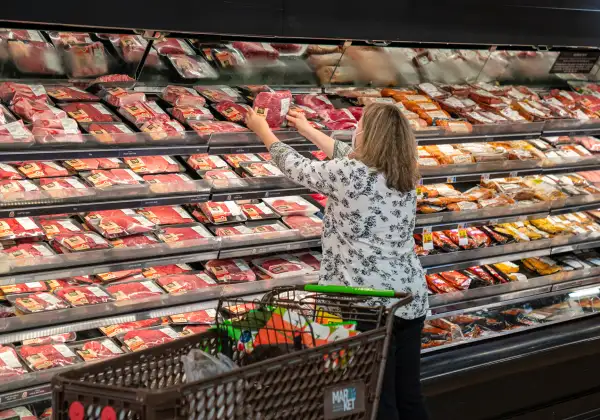Inflation Is (Still) at a Record High, but a Few Items Are Actually Getting Cheaper

Inflation in the U.S. has notched — say it with us — another four-decade high.
Consumer prices increased a staggering 9.1% in the 12 months ending in June, which is the largest increase since November 1981, according to new data from the Labor Department. This past May, the inflation rate was 8.6%; just since then, prices have risen 1.3%.
With each passing month, economists and consumers alike have been hoping that inflation will peak. The latest numbers, released by the U.S. Bureau of Labor Statistics Wednesday, offer no such relief. Overall, prices are climbing higher than expected, blowing past predictions that June's inflation rate would rise only slightly from May.
A few key areas are driving June’s record-high inflation. Food-at-home (aka grocery) prices rose 12.2% year over year, with the cost of coffee and chicken up nearly 16% and 19% respectively. Over that same period of time, rents rose 5.8%, the biggest jump since 1986.
Meanwhile, the price of gasoline was unsurprisingly astronomical, soaring nearly 60% compared to the previous year. According to the automotive club AAA, the national average for a gallon of regular gas hit an all-time high in June of $5.01. But in recent weeks, the price of gasoline has plunged in many areas following a steady drop in oil markets. (Because the decreases happened in late June and July, they aren’t fully reflected in the Labor Department’s inflation report for June.)
Certain major metropolitan areas are getting hit by inflation especially hard. The inflation rate exceeded 10% in Baltimore, Detroit, Houston, Miami, Phoenix and Seattle, according to the Labor Department.
The good news on inflation
While the overall inflation rate is alarming, experts say there is a silver lining. So-called “core inflation,” which is a measure that looks at price increases without factoring in volatile energy and food prices, is much lower than the overall number, coming in at 5.9%.
“The underlying rate of price [increases] in most parts of the economy is nowhere near 9.1%,” said Justin Wolfers, an economic professor at the University of Michigan, during an inflation panel hosted by the Brookings Institution Wednesday. “That's not stating that the numbers are inaccurate, but instead, most prices are rising at 4% to 5%.”
And in a few areas, prices actually decreased.
- Airfare: Riding the skies is getting a little cheaper. While airline prices are up 34% annually, they fell 1.8% from May (when adjusted for normal seasonal changes).
- Car rentals: Vehicle shortages at rental agencies have caused prices to spike in many areas, but overall, the cost of renting a car or truck is starting to fall. Annually, prices dropped 7.7%. Since May, they've slid 2.2% (seasonally adjusted).
- Consumer electronics: Industry experts have noted that many large retailers have a large surplus of electronic goods and are slashing prices to reduce their inventory. These recent price cuts are reflected in the inflation report: The cost of TVs, for example, dropped almost 13% compared to last June and 2.3% since May (seasonally adjusted). Smartphone prices also plummeted 20% annually.
- Hotels: Compared to May, lodging costs at hotels and motels have decreased by 3.3% (seasonally adjusted) — though they are up 11.5% annually.
- Meat: “Meatflation” took hold late last fall, sending the prices for several types of meat soaring. For now, those prices seem to have stabilized. Overall, meat prices are 1.3% lower than May (seasonally adjusted), with beef, veal and pork seeing across-the-board declines. Chicken is a notable outlier, with prices jumping nearly 19% from last June and 1.7% from May.
More from Money:
Best Money Moves to Make This July
Millions of State Stimulus Checks Are Coming Soon. Will They Make Inflation Worse?

